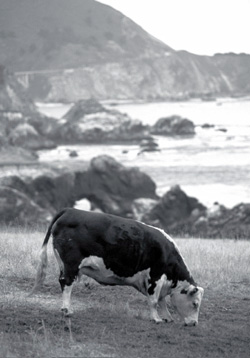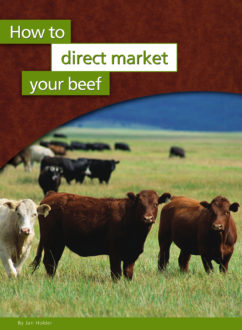
All forage is not created equal. You can work to improve both the amount and quality of your feed. Each season, we work to improve our pasture, and a large part of that is managing how the forage is harvested.
You’ll want to put your brood cows on your poorest forage. Granted, they will do better on better forage, but to get the biggest bang for your buck, you’ll want to save your good forage for your high-value animals, those you are finishing. These animals are gaining in weight and quality, as opposed to your cow herd, which is depreciating and doesn’t get as much of a benefit out of good forage. Some intensive graziers even do a leader/follower system.
In beginning our grass-fed program, we didn’t worry too much about forages. We used all native forage that was already in the fields. In fact, some producers report raising great-tasting beef from native grasses, which also saves them money. However, our experience is leading us to believe there may be enough value in planted forages to warrant more research.
We are looking at finishing our animals with high-energy forage. Here is a list, ranked highest to lowest:
- brassicas
- legumes
- cool-season annuals
- perennial ryegrass
- warm-season annuals
- cool-season perennials
- alfalfa
Most of the grass-fed world (Argentina, New Zealand) concentrates on the top four. In taste tests in Alabama, California and England, ryegrass was found to pro-duce a better tasting beef than grain. However, while fescue was almost universally disliked, it can be a useful piece of your system.
No one knows the minimum amount of time an animal has to be finished on high quality forage. There have been some figures thrown about ranging anywhere from 50 to 100 days, but no one really knows. Again, native grasses might prove an attractive, low-cost option.
One thing we do know comes from Dr. Dick Diven, of the Low Cost Cow/Calf Production School: When your steer reaches 60 percent of its mature body weight, it will be at a point in its development where it grows intramuscular fat (marbling) cells or connective tissue (gristle). If your steer is on an upward plane of nutrition (gaining weight), it will form marbling cells. If not, it will form connective tissue. This is one reason you can’t look at a fat steer ready for slaughter and predict if he’ll marble well. Unless you know how he was doing when he hit 60 percent of his mature weight, you can feed him all you want and he still won’t marble.
Dr. Diven also has a word of caution if you are using grain to supplement your grass program. Without going into the complex rumen chemistry, oil grains (like cotton seed or soy) will work more efficiently with the rumen, allowing the steer to eat more cheap grass. A starch grain (like corn) will work against the rumen in a grass-based program, making the rumen, in time, more dependent on bought grain for its nutritional needs.
